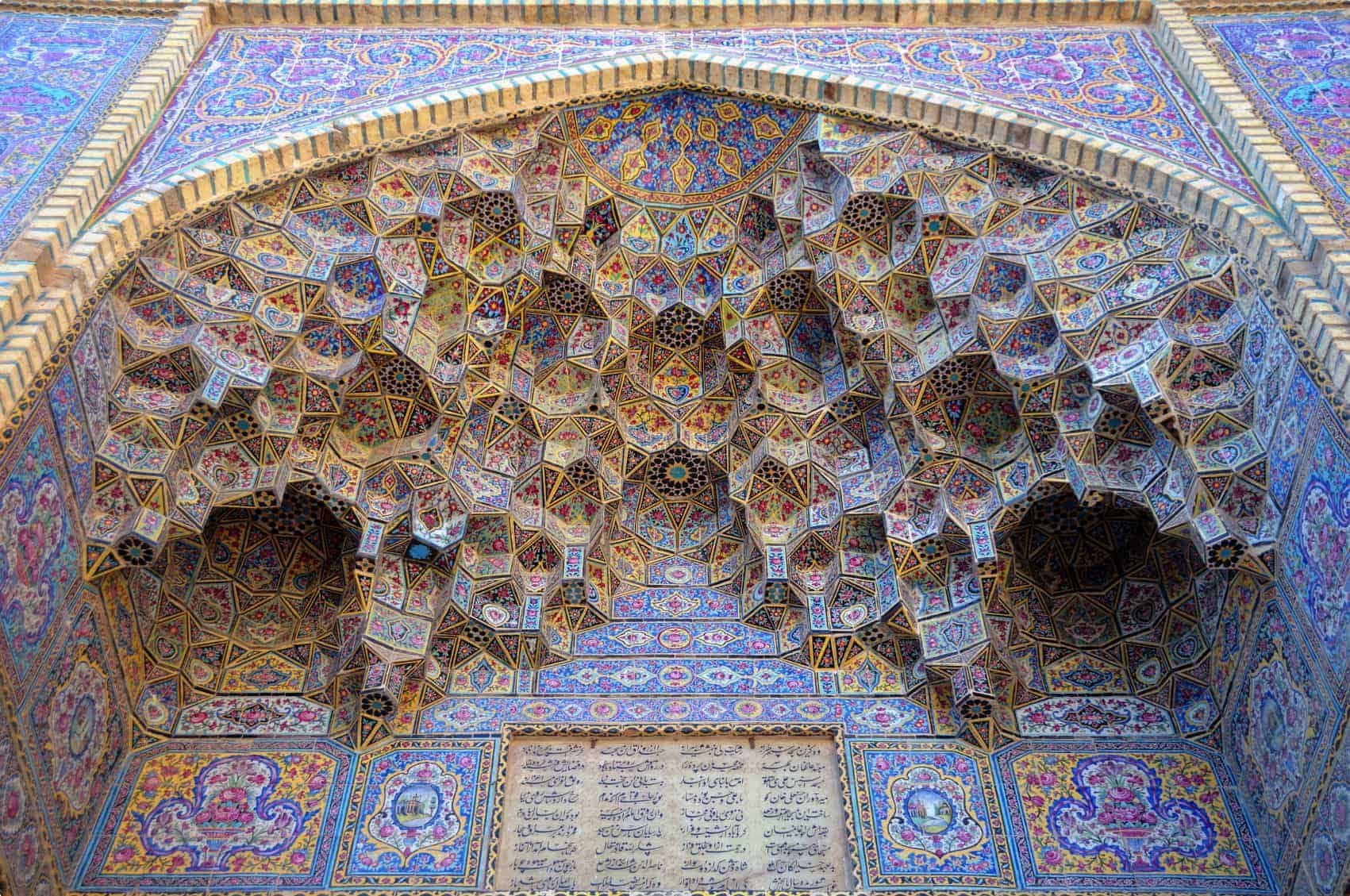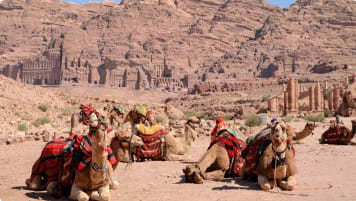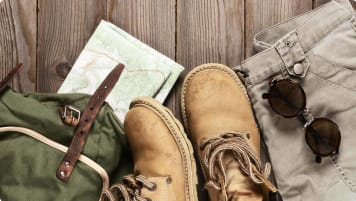30 places not to miss when visiting Iran
A list of 30 must-see places in Iran Holidays in Iran are regarded by many travellers as an unforgettable experience. Not only is it the ancient history, but also a collection of truly diverse beautiful…
12 Sep 17 · 4 mins read

A list of 30 must-see places in Iran
Holidays in Iran are regarded by many travellers as an unforgettable experience. Not only is it the ancient history, but also a collection of truly diverse beautiful landscapes that are there to be explored. The people are welcoming. It’s place on the Silk road has influenced its magnificent art and architecture that is there to be explored.
Here is Odyssey Traveller’s list of our recommendations of the places you should definitely visit on your Iran holiday.
Esfahan
“Esfahan nesf-e jahan” (Esfahan is half the world) … Renier, a 16th century French poet
In 1047, the Seljuks made Esfahan their capital and began to adorn it with their magnificently geometric style of architecture. When Shah Abbas the Great made Esfahan his capital in 1598, he added many more beautiful buildings to the considerable wealth of history preserved in the construction of earlier periods. Esfahan is an essential stop when travelling in Iran, and it’s worth spending time here enjoying the beauty of the city.
The Maidan-e Naqsh-e Jahan (‘the image of the world square’) contains many of the main sights to see in Esfahan. This is the second largest square in the world, and its beauty owes much to the vision of Shah Abbas the Great. Construction began in 1602 as the centrepiece of his new capital, and consequently it became the home of the finest architectural jewels in the Safavid empire. Around 15km of bazaar surrounds the square, and the goal posts used in polo games over 400 years ago are still in place at either end. Locals and tourists flock here to enjoy its gardens and fountains, or shop in the surrounding bazaar.
Esfahan
What are the key places in Esfahan to see?
- The Imam Mosque, the largest building attributed to Shah Abbas the Great. Work began on the magnificent entrance portal in 1611, and it took four years to finish. 30m tall, it has mosaics featuring geometric designs, floral motifs and calligraphy by the greatest artists of the age. The Mosque faces towards Mecca, however the entrance portal is oriented to face the square.
- The Sheikh Lotfollah Mosque, originally built for the Shah’s harem. Its pale dome makes use of delicate cream-coloured tiles that change colour throughout the day from cream to pink. Its portal boasts some of the best surviving Safavid era mosaics in the country.
- The Ali Qapu Palace, built at the end of the 16th century as a residence for Shah Abbas I. Its elevated terrace affords a wonderful perspective of the Square and one of the best views of the Imam Mosque.
- Chehel Sotun, built as a pleasure pavilion and reception hall. Today it’s most famous for its frescoes. Although the Afghans whitewashed them during an 18th century invasion, the frescoes fortunately survived.
- Khaju bridge over the Zayande river. The Khaju Bridge is arguably the finest in the city. Its 110m length has two levels of terraced arcades, the lower containing locks to regulate the water flow. The remains of some of the original painting and tiles can still be seen, as well as stone seats built for the Shah to sit on to admire the view.
- Sio She Pol Bridge is 298m long, with 33 arches that give it its name. It links the upper and lower halves of the Chahar Bagh, the tree-lined main street that runs through the centre of Esfahan
- Cathedral of the Holy Saviour (the Vank Cathedral), between 1606 and 1655. Its richly decorated interior is the focal point of the Armenian Church in Iran.
Shiraz; is also a must see place of interest on any Iran Trip
Shiraz is a city of over 1 million people within Fars province, in the southern Zagros Mountains. Once a much larger region, its language, Farsi, became the official language of the Persians. Shiraz held a pivotal role in the later history of Persia, particularly after the Arab invasion. It became the literary capital thanks, in part, to the reputations of the poets Sa’di, who died in 1291, and Hafez, who died in 1389. It was the Iranian capital during the mid 1700s the Zand dynasty made it their capital. Many of the most beautiful buildings were built or underwent restoration in this period. Always a centre for learning and all things fine, Shiraz fortunately escaped destruction by Genghis Khan and Tamerlane’s forces. In the Safavid period, European traders came here to export the city’s famous wine.
Shiraz
What are the key places in Shiraz to see?
- The Arg-e Karim Khan, in the centre of Shiraz itself. The Arg is a citadel, built during the early Zand period as part of the royal court. Iran’s ruler at the time, Karim Khan, hoped Shiraz would rival Esfahan. Its design combines military and residential architecture, as it was the home of Karim Khan and his military base. After the fall of the Qajar dynasty it became a prison, and in 1971 Iran’s Cultural Heritage Organisation took over its management and began renovations in 1977.
- The photogenic Vakil Bazaar, in the historical center of the city. First built in the 11th century, it’s a wonderful place to have lunch and spend time wandering around.
- Pasargadae, built by Cyrus the Great, founder of the Achaemedian Empire in around 546 BCE. His tomb, private palace and audience palace still survive.
- Persepolis, known locally as Takht-e Jamshid (‘Jamshid’s Throne’), after a legendary king. It’s undoubtedly one of the highlights of a visit to Iran, a vast array of magnificent ruins conveying the splendour of Achaemenid Persia. Persepolis is renowned for its monumental architecture, urban planning, construction technology and art. Work began when Darius the Great took the throne in 518 BCE, and later kings including Xerxes I and II and Artaxerxes I, II and III all made additions. Eventually it spread over 125,000sqm and was one of four cities at the heart of an empire that spread from the Indus River to Ethiopia. During the annual Nowruz (New Year) celebrations, subjects came from across the empire to pay homage and tribute to their kings. Alexander the Great burned Persepolis to the ground in 330 BCE, and it was lost for centuries under dust and sand until excavations in the 1930s. Although Alexander’s historians wrote of its total destruction, significant areas of the centre remain – along with some of the greatest sculpture found in Iran today. (We have another article on the Persepolis)
- Naqsh-e Rostam, the magnificent royal tombs, are hewn out of a cliff high about the ground. They are thought to contain the tombs of Darius II, Ataxerxes I, Darius I and Xerxes I. The openings lead to chambers for bone storage, once the carrion birds had cleaned them up. The reliefs above the openings show the kings standing at fire altars, supported by figures representing their subject nations. Eight Sassanian stone reliefs are cut into the cliff, depicting scenes of imperial conquests and royal ceremonies.
Tehran, the capital city of Iran

Tehran was first known in the 13th century as a village of Rey, at that time the main urban centre under the Achaemenid Empire After its sacking by the Mongols in 1220, the survivors fled to Tehran, turning the village into a moderately prosperous trading centre. In the 16th century the Safavid king Tahmasb I laid out gardens, caravanserai, and a wall with 114 towers to protect the town. It continued to grow during the 18th century and became Iran’s 32nd capital city in 1795. The palaces and gardens of the 18th century Qajar dynasty and the following Pahlavis are now places of interest, along with Tehran’s wonderful museums.
Tehran
What are the key places in Theran to see?
- The Sa’ad Abad Museum complex is set within 104 hectares of parkland. The Pahlavis used it as their summer home. Today, the complex is home to several different museums: the White Palace, the Pahlavi’s summer residence; the Green Palace, built at the end of the Qajar era; the Nation’s Art Museum, Military Museum and the Museum of Fine Arts.
- The National Museum of Iran has a wonderful collection of artefacts from excavations including Persepolis. Highlights include inscriptions, a statue of a wonderfully life-like mastiff and an Elamite statue of a bull from the 2nd millennium BCE.
- The National Jewel Museum is one of the biggest tourist attractions in Tehran, housed within an enormous bank vault. Most of the collection dates to the 16th to 17th Safavid period. Highlights include the famous Darya-ye Nur (Sea of Light) pink diamond, weighing 182 carats and said to be the largest uncut diamond in the world; and a Globe of Jewels, made in 1869 from 51,366 gems. The seas are are made of emeralds and the land in rubies, while Iran, France and England are in picked out in diamonds.
- The Qajar ruler Nasser al-Din Shah (r. 1848-96) admired European palaces so much he wanted one of his own! Consequently he built the lovely Golestan Palace on the site of an earlier Safavid era citadel.
Yazd, an oasis in a tour of Iran
Yazd is an historic Silk Road oasis town set to the east of the Zagros mountains between two deserts. The extremely hot temperatures in summer led to the development of architecture adapted to its desert surroundings. Consequently, it’s nicknamed Shahr-e Badgirha (the City of Windcatchers), after its many fine badgirs (wind towers). These rely on the wind and convection to cool houses and the water reservoirs in the town area.
After the Arab conquest of Iran in the 7th century, many Zoroastrians migrated to Yazd from neighbouring provinces. The Arabs allowed Yazd to remain Zoroastrian even after its conquest, and Islam only gradually became the dominant religion in the city.
Yazd
What are the key places in Yazd to see?
- The Old City area is one of the oldest towns on earth. The old city is a warren of sun-dried mud brick homes dominated by tall badgirs and high walls — a wonderfully historic place perfect for a good wander around.
- The Jameh Mosque, built in the 15th century, has one of the tallest entrance portals in Iran, including two 48m high minarets. The mosque is built on the site of a 12th century building that was once an earlier fire temple.
- Meybod is and ancient village some 50 kilometres north of Yazd. Built of mainly mud brick houses, this village is at least 1,800 years old. It has several buildings and structures typical of old Iran including a caravanserai, an underground qanat water supply system, a ‘fertiliser’ factory (!) in the form of a pigeon tower, a huge Safavid era ice house, and in the centre of town, the Narein Castle, thought to be one of Iran’s oldest.
- The haunting Towers of Silence, now on the outskirts of the city. Yazd was one of the strongholds of Zoroastrianism. In accordance with Zoroastrian beliefs about the purity of the earth, dead bodies were not buried but placed in uncovered stone towers — the Towers of Silence — where birds could pick the bodies clean. They were last used in the 1960s.
- Finally on a slightly more cheerful note, confectionary! Today, Yazd is famous for confectionary, which has a tremendous following throughout Iran. Recipes are closely guarded secrets! Baklava, ghotab and pashmak are the most popular sweets made in the city.
Hamadan
Hamadan, once known as Ecbatana, was one of the ancient world’s greatest cities. It lies on the legendary Silk Road between Mesopotamia and the Iranian Plateau.
Hamadan
What are the key places in Hamadan to see?
- The Alisadr Caves have a river, up to 14m deep, flowing through the middle. You can explore the caves by boat along channels leading to an enormous underground atrium.
- The Temple of Anahita at Kangavar. Classical historians have written that the temple was a vast palace built in wood and covered by plates of silver or gold. The floor tiles were silver, and the whole building faced with bricks of silver and gold. Eventually Alexander the Great’s forces plundered this incredible wealth around 331 BCE.
- Taq-e Bostan (the Arch of the Garden) is a towering cliff inscribed with extraordinary Sassanian bas-reliefs, set in and around a pair of carved alcoves. The site is in a beautiful setting on the Silk Road and the reliefs are adjacent to a spring that empties into a large reflecting pool at the base of the mountain cliff.
- The World Heritage listed archaeological site of Bisotun sits alongside the ancient trade route linking the Iranian high plateau with Mesopotamia. It features remains from prehistoric times through to the Median, Achaemenid, Sassanian, and Ilkhanid periods. Its main sight is the bas-relief and cuneiform inscription of Darius The Great, from when he rose to the throne of the Persian Empire in 521 BCE. It portrays Darius holding a bow as a sign of sovereignty, treading on the chest of a figure who lies on his back before him. According to legend, the figure represents Gaumata, the Median pretender to the throne whose assassination led to Darius’s rise to power. Finally, below and around the bas-reliefs there is an inscription of around 1,200 lines which tells the story of the battles Darius waged against the governors who attempted to take apart the Empire.
Kashan
First settled in the 4th millennium BCE, the history of the lovely city of Kashan is interwoven with legend. One oral history has the Bible’s Three Wise Men setting out from here to pay their respects to the baby Jesus. This is distinctly possible, as the Three Wise Men were magis (Zoroastrian priests) — hence ‘the Adoration of the Magi’. During the Seljuk period (1051-1220 CE), Kashan became famous for its textiles, pottery and tiles.
Kashan
What are the key places in Kashan to see?
- The Fin Garden is over 1,000 years old, and was a summer retreat by some of the Safavid kings. It’s a classical Persian vision of paradise, famous for its spring water. This is channelled through several pools and fountains to water the garden’s orchards and trees.
- A wealthy carpet merchant named Seyyed Ja’far Tabatabei built the Khan-e Tabatabei around 1880. The house is famous for its intricate stone reliefs and its fine stucco, mirror and stained glass decoration. It has three sections: the andaruni, where family members lived; the biruni used for entertaining guests; and the khadameh (servants’ quarters).
- In the 1890s, a merchant known as Borujerdi, who wanted the hand of Seyyed Ja’far Tabatabei’s daughter in marriage, built the Khan-e Borujerdi. Its reception hall features frescoes painted by Kamal ol-Molk, the foremost Iranian artist of the time
Finally you have a list of 30 places recommended by Odyssey Travellers as the must see places on a tour of Iran. They are unique set, often recognised by UNESCO as important experiences and buildings in the world. Recognised for their contribution to human settlement.
Odyssey Traveller offers Iran tours each year, typically with two departures as a minimum.
These articles may also assist in you with your Iran travel plans. The first is a general piece on Iran The second article is on Persepolis
Related Tours
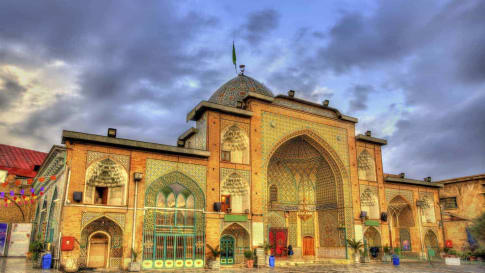
17 days
Sep, Nov, AprIran Culture and History Escorted Small Group Tour for seniors
Visiting Iran
Unlike its neighbours to the west and northwest, Iran had not adopted Christianity and it was the explosive spread of Islam and its ready adoption, without the Arabic language or customs, which helped unite the culture and greatly enrich Persian heritage. This small group tour program includes the great cities of Iran, historic sites, mosques, gardens, bazaars and teahouses for couples and solo travellers.
From A$12,415 AUD
View Tour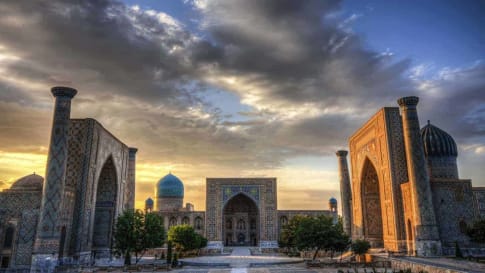
31 days
May, AugTravel on the Silk Road of Central Asia | Small Group Tour for Seniors
Visiting Kazakhstan, Kyrgyzstan
The Silk Road is an ancient trade route linking China and Imperial Rome through Central Asia. Few areas in the world remain as unexplored or offer such richness in terms of ancient and modern history, culture, and scenic diversity as Central Asia. Our Small group Silk road tours itinerary explores the Road through remote deserts and mountainous environments as we visit key sites between Almaty and through to Samarkand over 31 days.
From A$22,985 AUD
View Tour